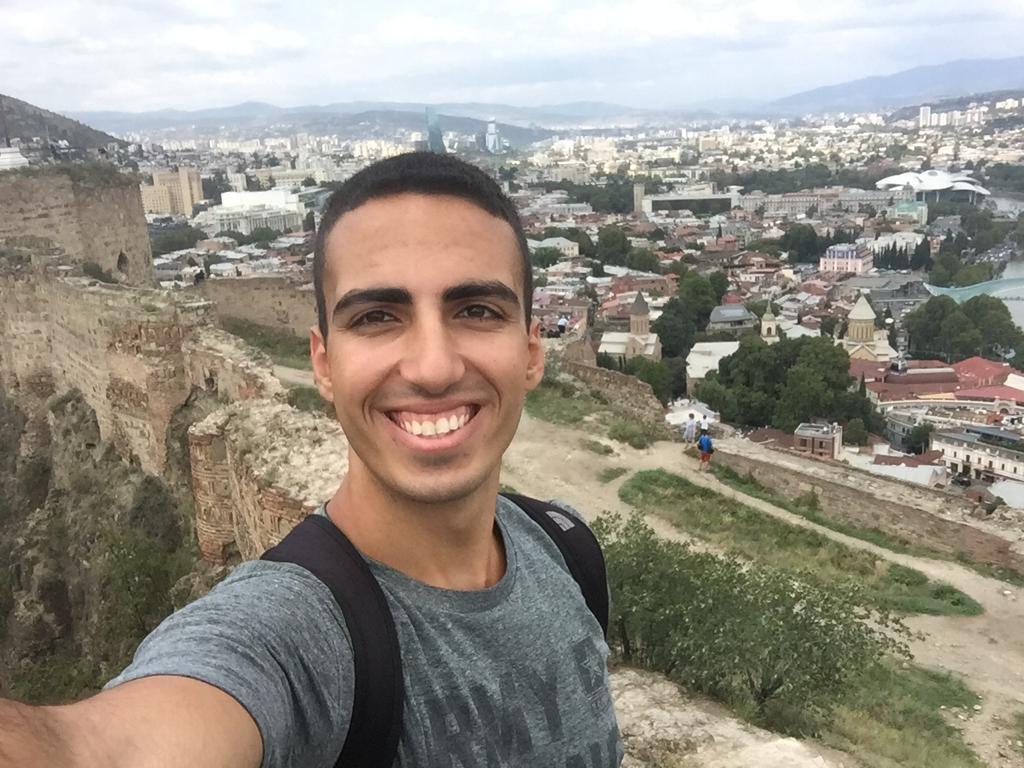Sahara Sands
- Aaron Schorr

- Jun 10, 2023
- 4 min read
Marrakech was the gateway to the Sahara, with lots of tours on offer. So many, in fact, that we discovered they were all basically fronts for the same centralized operation and it didn't matter which we used to book. After a minor mishap coordinating with our driver, we found ourselves squeezed into the back row of a van heading east. Sandstone apartment complexes turned into neighborhoods under construction with utilities laid out, olive groves, and golf resorts - I wondered who the customers were.
After an hour, we started climbing a lush valley lined with irrigation canals. The road was well engineered, or on its way to becoming one, with the work taking place around us. We blew out two rear tires going over the pass, but the driver and a mechanic replaced both in under 30 minutes in the town of Agouim, nearly 2,000 meters above sea level.
The air was fresh and the sky a brilliant blue as we drove through villages transitioning from red mud and bricks to concrete buildings. In that very Arab way, every village looked somewhat unfinished, as if construction was permanently on hold.
We stopped at Ait Ben Haddou, a Berber village located in a broad wadi of red dirt. The village was originally built in 1200 BCE on the top of a small hill overlooking the caravan route from Timbuktu to Marrakech. The locals would exchange salt mined in the area for Saharan slaves, and gradually expanded the village into the valley. The caravan route became a highway, but the village found itself on the opposite side of the flood bed and thus cut off from the outside world for days at a time in the rainy season. The Moroccan government built a new village on the other side, and all but 5 of the village's 95 families relocated.
The village contains a number of qasrs, castle-like buildings made of red mud, which looked intensely familiar, and I soon realizd why. Ait Ben Haddou is now a tourist attraction, but its larger source of income is its use as a movie set for major Hollywood productions, including Indiana Jones, Game of Thrones, and Gladiator. Looking down from the top of the hill, a wooden amphitheater was under construction for the filming of Gladiator 2.
The village also had 15 Jewish families living in it, with the last moving away in 1962. These Berber Jews were craftsmen, while the Muslim population grew crops and grazed goats. The latter have a strong sense of identity, having campaigned successfully to both preserve the synagogue as an official historical site and to teach the Berber language in school.
The heat and the lunch knocked me out, and I woke up in the back of the bus almost two hours later with breathtaking rocky canyons to our left as we descended into the Sahara proper. The van was struggling, and the air conditioning would give out every time the engine strained uphill. The desert villages had no women visible, and the men squatted in the shade wearing kaftan robes and skullcaps.
We drove through the provincial seat of Zagora with its palatial administrative buildings and stopped in a sandy lot. Waiting for us were a column of camels to reach our camp, which was not accessible by road. We mounted, the camels were tied to each other, and we set off caravan-style. The illusion didn't last long, with a family of five passing our column on a tiny scooter. We rode through palm groves and watermelon fields, and eventually reached open desert.
The visibility was rapidly deteriorating as the wind picked up, blowing sand around us with increasing force. We arrived at the camp within an hour of departing, by which point the visibility was down to around 30 feet and standing up straight was a challenge.
In the camp, we struggled to make our way to our designated tent before joining our Berber hosts for tea and dinner - couscous with chicken. Every exposed part of my body was caked with sand. I left the tent to pee and accidentally stumbled into a four-foot tall sand dune that had accumulated behind it, which I only figured out after the sand was above my knee. I was mostly disappointed to not be able to see the stars with such dark skies, but the brilliant sunrise the next morning was some consolation.
We got back onto the camels and rode to the highway in much more pleasant conditions. Better still, we snagged much better seats on the van. I dozed off for the first few hours, and the desert became a little greener every time I woke up. We eventually arrived in Ouarzazate, a desert city dating to the 16th century. Ouarzazate was known as the "Moroccan Hollywood" for its frequent appearances in Western films. The traffic circle entering town had a pair of golden film reel statues, and our guide had worked as an extra in several films shot in the city's historical kasbah.
We were taken to a women's cooperative to see carpets and crafts, but the only woman in sight was the one who brewed our tea. One of our fellow passengers asked the obvious, and our host smiled. "The cooperative is supposed to keep the women in the villages," he replied, stemming both internal migration to cities and emigration to Europe. An uncomfortable silence settled over the group, but he picked up a carpet made of cactus fiber. "Look, this one feels just like silk."
The clouds had settled over the High Atlas, and we rose above them as we crossed the pass. On a peak in the distance, a message could be seen written in oversized letters made of white stones: حفظ الله الملك, God save the king.



















































Comments